Discover 25 hidden attractions, cool sights, and unusual things to do in Belgium. Don't miss out on these must-see attractions: Grand Place (Brussels), Mini-Europe (Brussels) or Atomium (Brussels).
Below, you can find the list of the most amazing places you should visit in Belgium.
Table of Contents
Grand Place, Brussels
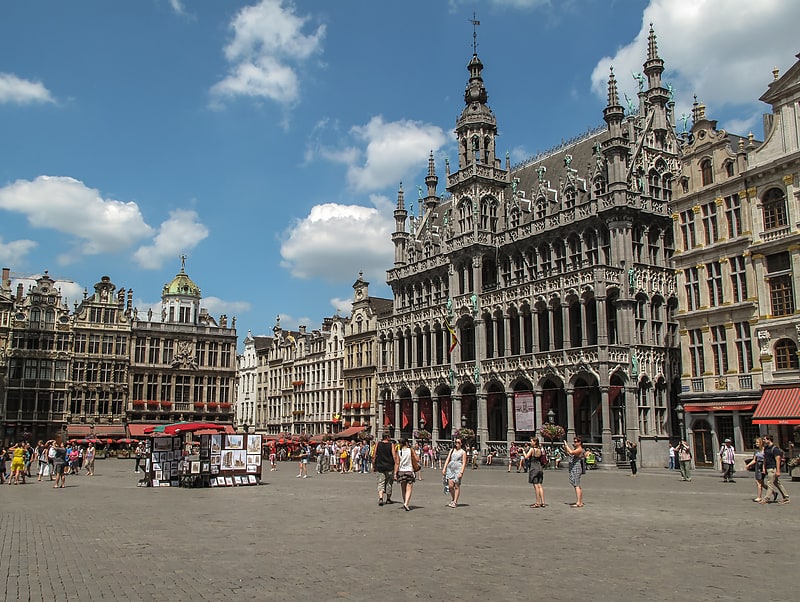
Also known as: Grand-Place de Bruxelles
Plaza in the City of Brussels, Belgium. The Grand Place or Grote Markt is the central square of Brussels, Belgium. It is surrounded by opulent Baroque guildhalls of the former Guilds of Brussels and two larger edifices; the city's Flamboyant Town Hall, and the neo-Gothic King's House or Bread House building containing the Brussels City Museum. The square measures 68 by 110 metres and is entirely paved.
The Grand Place's construction began in the 11th century and was largely complete by the 17th. In 1695, during the Nine Years' War, most of the square was destroyed during the bombardment of Brussels by French troops. Only the facade and the tower of the Town Hall, which served as a target for the artillery, and some stone walls resisted the incendiary balls. The houses that surrounded the Grand Place were rebuilt during subsequent years, giving the square its current appearance, though they were frequently modified in the following centuries. From the mid-19th century, the square's heritage value was rediscovered, and it was thoroughly renovated.
Nowadays, the Grand Place is the most important tourist destination and most memorable landmark in Brussels. It is also considered one of the world's most beautiful squares, and has been a UNESCO World Heritage Site since 1998. The square frequently hosts festive and cultural events, among them, in August of every even year, the installation of an immense flower carpet in its centre. It is also a centre of annual celebrations during the Christmas and New Year period, and a Christmas tree has been erected annually on the square since the mid-20th century.
This site is served by the premetro (underground tram) station Bourse/Beurs (on lines 3 and 4), as well as the bus stop Grand Place/Grote Markt (on line 95).[1]
Address: Grote Markt / Grand Place, 1000 Brussel (Bruxelles-Ville)
Mini-Europe, Brussels

Amusement park in the City of Brussels, Belgium. Mini-Europe is a miniature park located in Bruparck, at the foot of the Atomium, in Brussels, Belgium. Mini-Europe has reproductions of monuments in the European Union and other countries within the continent of Europe on display, at a scale of 1:25. Roughly 80 cities and 350 buildings are represented. Mini-Europe receives 350,000 visitors per year and has a turnover of €4 million.
The park contains live action models such as trains, mills, an erupting Mount Vesuvius, and cable cars. A guide gives the details on all the monuments. At the end of the visit, the Spirit of Europe exhibition gives an interactive overview of the European Union in the form of multimedia games.
The park is built on an area of 24,000 m2 (300,000 sq ft). The initial investment was of €10 million in 1989, on its inauguration by then-Prince Philip of Belgium.[2]
Address: Voetballaan 1 Avenue du Football, 1020 Laken (Bruxelles-Ville)
Atomium, Brussels
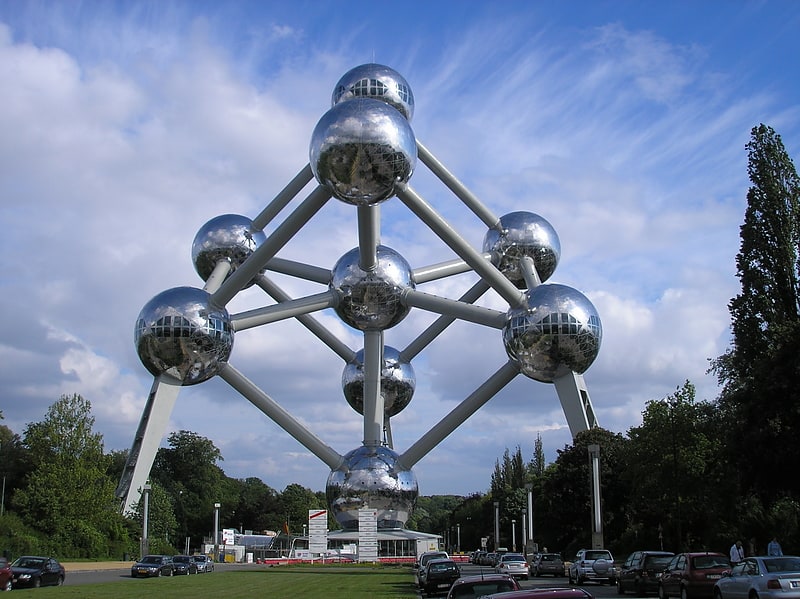
Museum in the City of Brussels, Belgium. The Atomium is a landmark building in Brussels, Belgium, originally constructed for the 1958 Brussels World's Fair. It is located on the Heysel/Heizel Plateau in Laeken, where the exhibition took place. Nowadays, it is the city's most popular tourist attraction, and serves as a museum, an art centre and a cultural place.
Designed by the engineer André Waterkeyn and the architects André and Jean Polak, it stands 102 metres (335 ft) tall. Its nine 18-metre-diameter (59 ft) stainless steel clad spheres are connected in the shape of a unit cell that could represent an iron crystal magnified 165 billion times. Tubes connecting the spheres enclose stairs, escalators and an elevator (in the central, vertical tube) to allow access to the six visitable spheres, which contain exhibit halls and other public spaces. The top sphere includes a restaurant with a panoramic view of Brussels. The building was completely renovated between 2004 and 2006 by the companies Jacques Delens and BESIX.
The building is located on the Square de l'Atomium/Atomiumsquare, at the intersection of the Boulevard du Centenaire/Eeuwfeestlaan with the Avenue de l'Atomium/Atomiumlaan and the Avenue de Bouchout/Boechoutlaan. It is served by Heysel/Heizel metro station on line 6 of the Brussels Metro.[3]
Address: Square de l'Atomium, 1020 Bruxelles (Bruxelles-Ville)
Belfry, Bruges
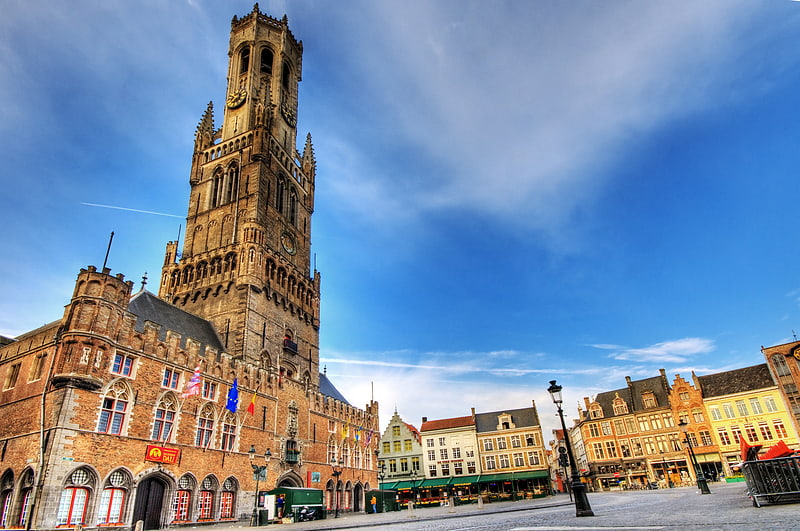
Also known as: Beffroi de Bruges
Medieval bell tower on market square. The Belfry of Bruges is a medieval bell tower in the centre of Bruges, Belgium. One of the city's most prominent symbols, the belfry formerly housed a treasury and the municipal archives, and served as an observation post for spotting fires and other dangers.[4]
Address: Markt 7, 8000 Brugge (Centrum)
City Hall, Antwerp
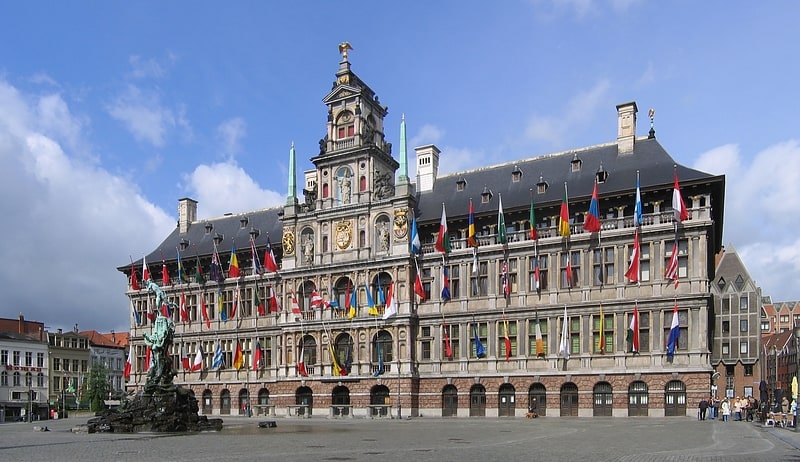
Also known as: Hôtel de ville d'Anvers
Building in Antwerp, Belgium. The City Hall of Antwerp, Belgium, stands on the western side of Antwerp's Grote Markt. Erected between 1561 and 1565 after designs made by Cornelis Floris de Vriendt and several other architects and artists, this Renaissance building incorporates both Flemish and Italian influences. The Stadhuis is listed as one of the Belfries of Belgium and France, a UNESCO World Heritage Site.[5]
Address: Grote Markt, 2000 Antwerp (Antwerpen)
Antwerp Zoo, Antwerp
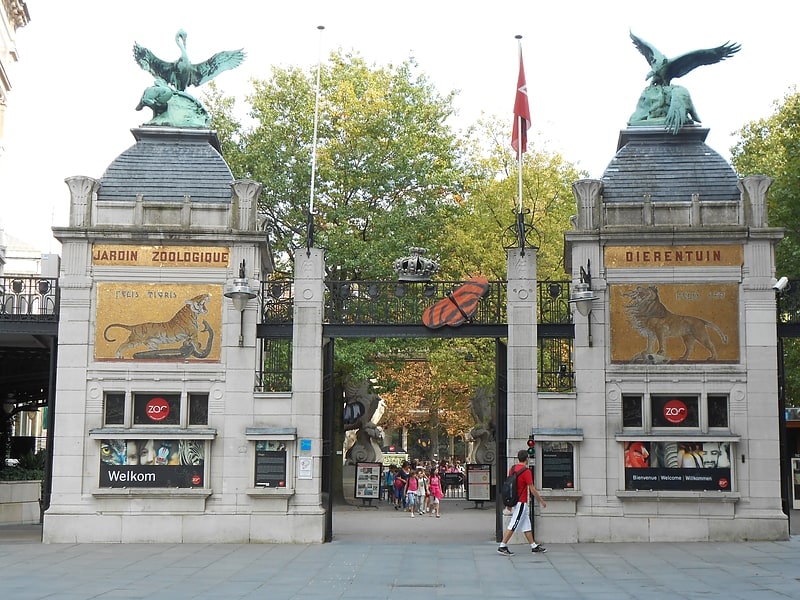
Also known as: Zoo d'Anvers
Animal park established in 1843. Antwerp Zoo is a zoo in the centre of Antwerp, Belgium, located next to the Antwerpen-Centraal railway station. It is the oldest animal park in the country, and one of the oldest in the world, established on 21 July 1843.[6]
Address: Koningin Astridplein 20-26, 2018 Antwerpen (Antwerpen)
Plantin-Moretus Museum, Antwerp
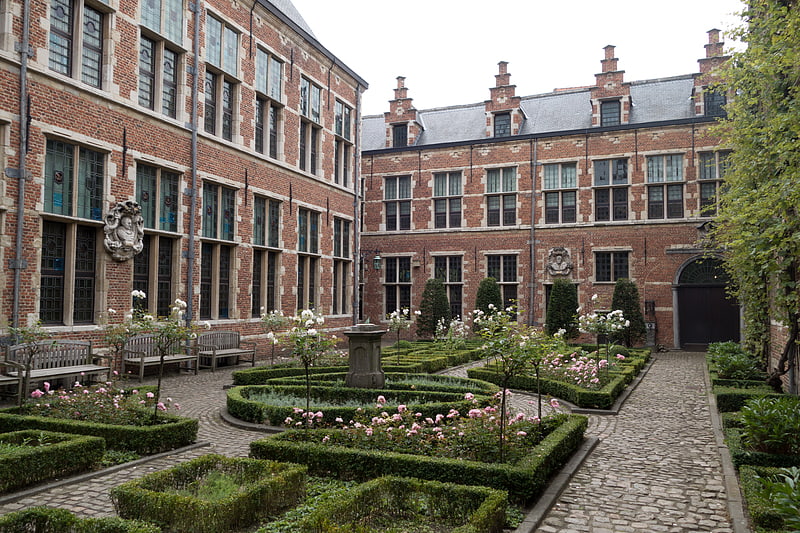
Also known as: Musée Plantin-Moretus
Museum of printing in 16th-century house. The Plantin-Moretus Museum is a printing museum in Antwerp, Belgium which focuses on the work of the 16th-century printers Christophe Plantin and Jan Moretus. It is located in their former residence and printing establishment, the Plantin Press, at the Vrijdagmarkt in Antwerp, and has been a UNESCO World Heritage Site since 2005.[7]
Address: Vrijdagmarkt 22-23, 2000 Antwerpen (Antwerpen)
Basilica of the Holy Blood, Bruges

Also known as: Basilique du Saint-Sang de Bruges
Church and pilgrimage site with holy relic. The Basilica of the Holy Blood is a Roman Catholic basilica in Bruges, Belgium. The church houses a relic of the Holy Blood allegedly collected by Joseph of Arimathea and brought from the Holy Land by Thierry of Alsace, Count of Flanders. Built between 1134 and 1157 as the chapel of the Count of Flanders, it was promoted to a minor basilica in 1923.
The basilica in Burg square consists of a lower and upper chapel. The lower chapel, dedicated to St. Basil the Great, is a dark Romanesque structure that remains virtually unchanged. The venerated Passion relic is in the upper chapel, which was rebuilt in the Gothic style in the 16th century and renovated in the 19th century in Gothic Revival style.[8]
Address: Burg 13, 8000 Brugge (Centrum)
Boudewijn Seapark, Bruges
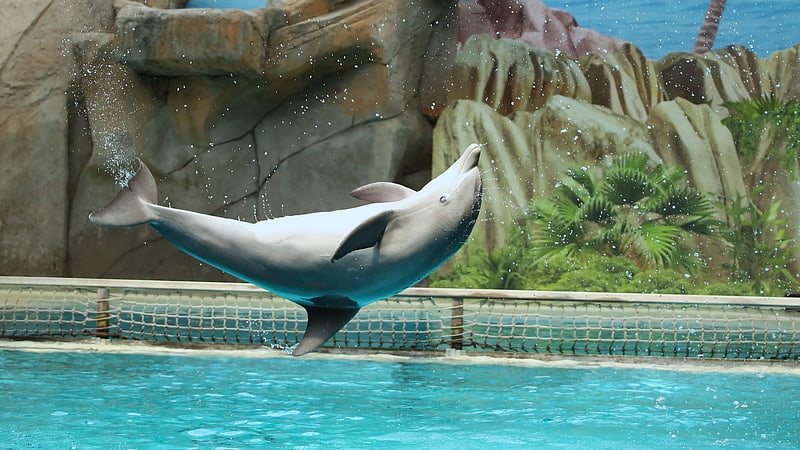
Old-world theme park with dolphin shows. Boudewijn Seapark is a marine mammal park and theme park located in Sint-Michiels, Bruges, Belgium.[9]
Address: Alfons de Baeckestraat 12, 8200 Brugge (Sint-Michiels)
Belfry of Ghent, Ghent
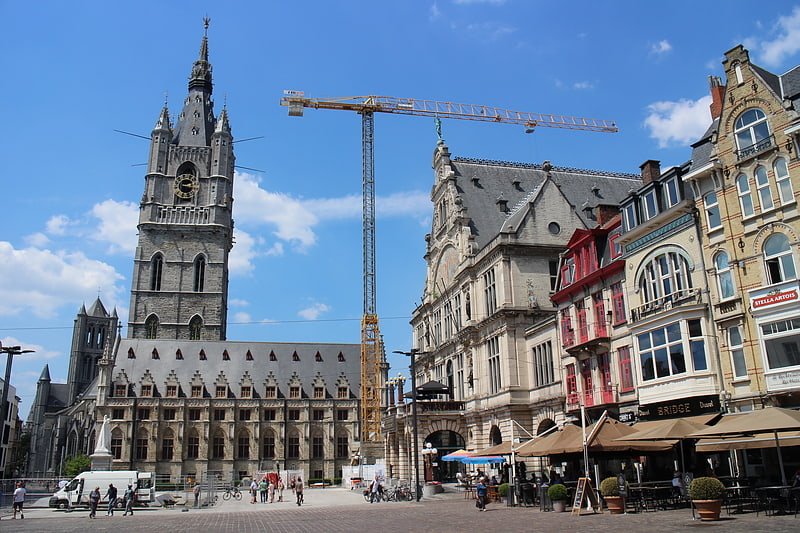
Also known as: Beffroi de Gand
14th-century belfry and watch tower. The 91-metre-tall Belfry of Ghent is one of three medieval towers that overlook the old city centre of Ghent, Belgium, the other two belonging to Saint Bavo Cathedral and Saint Nicholas' Church. Its height makes it the tallest belfry in Belgium. The belfry of Ghent, together with its attached buildings, belongs to the set of Belfries of Belgium and France, a UNESCO World Heritage Site.[10]
Address: Emile Braunplein 40, 9000 Gent (Binnenstad)
Saint Nicholas Church, Ghent
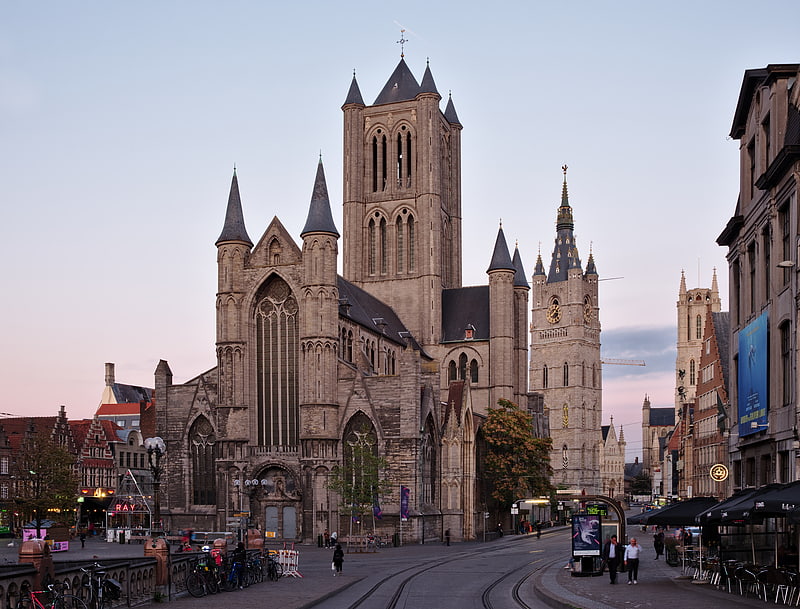
Also known as: Église Saint-Nicolas de Gand
Late Gothic church with rich interiors. St. Nicholas Church is one of the oldest and most prominent landmarks in Ghent, Belgium. Begun in the early 13th century as a replacement for an earlier Romanesque church, construction continued through the rest of the century in the local Scheldt Gothic style. Typical of this style is the use of blue-gray stone from the Tournai area, the single large tower above the crossing, and the slender turrets at the building's corners.
Built in the old trade center of Ghent next to the bustling Korenmarkt (Wheat Market), St. Nicholas Church was popular with the guilds whose members carried out their business nearby. The guilds had their own chapels which were added to the sides of the church in the 14th and 15th centuries.
The central tower, which was funded in part by the city, served as an observation post and carried the town bells until the neighboring belfry of Ghent was built. These two towers, along with the Saint Bavo Cathedral, still define the famous medieval skyline of the city center. One of the treasures of the church is its organ, produced by the famous French organ builder Aristide Cavaillé-Coll.[11]
Address: Cataloniestraat 4, 9000 Ghent (Binnenstad)
Design museum Gent, Ghent
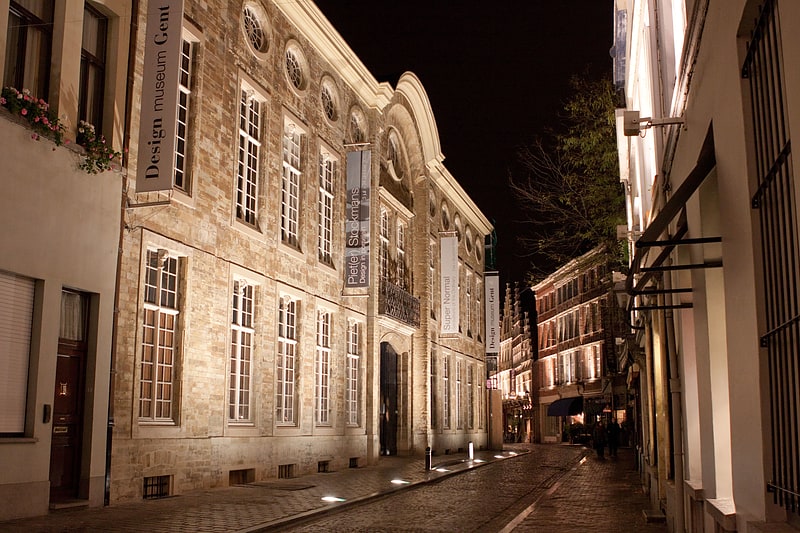
Also known as: Design Museum Gent
Museum in Ghent, Belgium. Design Museum Gent is the only museum in Belgium with an international design collection. The museum complex, situated in the heart of the tourist centre of Ghent, comprises an imposing 18th-century mansion and a modern wing. The museum possesses a comprehensive and trend-setting collection of Belgian design, supported by international top-class objects. Its collection includes everything from the Art Nouveau of Henry van de Velde to contemporary avant-garde design.[12]
Address: Jan Breydelstraat 5, 9000 Ghent (Sint-Elisabethbegijnhof-Prinsenhof-Papegaai-Sint-Michiels)
Bois du Cazier, Charleroi
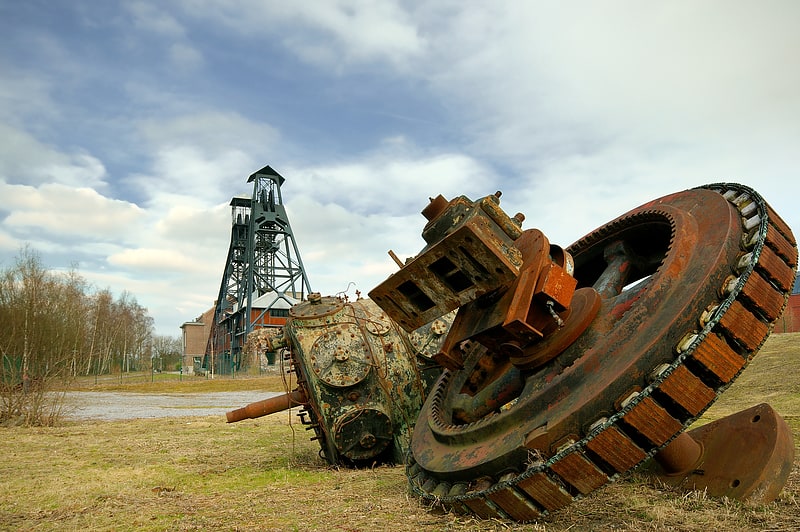
Museum in Charleroi, Belgium. The Bois du Cazier was a coal mine in what was then the town of Marcinelle, near Charleroi, in Belgium which today is preserved as an industrial heritage site. It is best known as the location of a major mining disaster that took place on August 8, 1956 in which 262 men, including a large number of Italian labourers, were killed. Aside from memorials to the disaster, the site features a small woodland park, preserved headframes and buildings, as well as an Industrial Museum and Glass Museum. The museum features on the European Route of Industrial Heritage and is one of the four Walloon mining sites listed by UNESCO as a World Heritage Site in 2012.[13]
Address: Rue du Cazier 80, 6001 Charleroi (Marcinelle)
Tournai Cathedral, Tournai
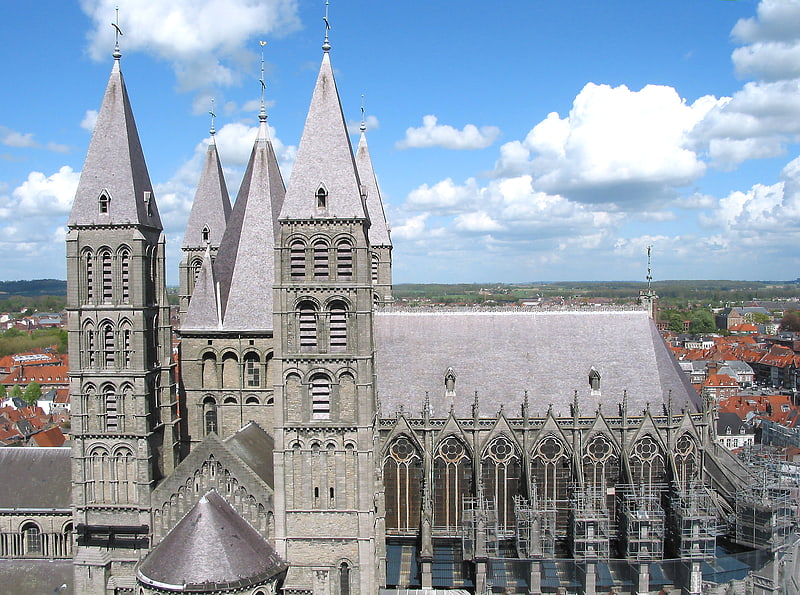
Also known as: Cathédrale Notre-Dame de Tournai
Medieval place of worship with 5 towers. The Tournai Cathedral, or Cathedral of Our Lady, is a Roman Catholic church, see of the Diocese of Tournai in Tournai, Belgium. It has been classified both as a Wallonia's major heritage since 1936 and as a World Heritage Site since 2000.[14]
Address: Place de l'Evêché 1, 7500 Tournai
St. Peter's Church, Leuven
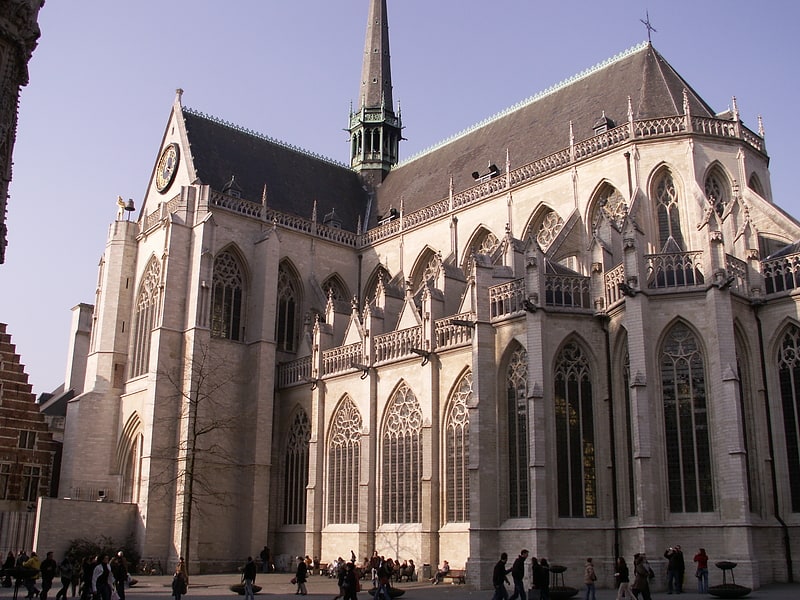
Also known as: Collégiale Saint-Pierre de Louvain
15th-century church with noted artworks. Saint Peter's Church in Leuven, Belgium, is a Roman Catholic church built in the 15th century in the Brabantine Gothic style. The church has a cruciform floor plan and a low bell tower that has never been completed. It is 93 metres long. It is located on the city's 'Grote Markt', opposite the Town Hall. In 1999, the belfry and bell tower of the church was inscribed on the UNESCO World Heritage List as part of the Belfries of Belgium and France site, in recognition of the civil importance and architecture of the belfries in the region.[15]
Address: Grote Markt, 3000 Leuven
St. Rumbold's Cathedral, Mechelen
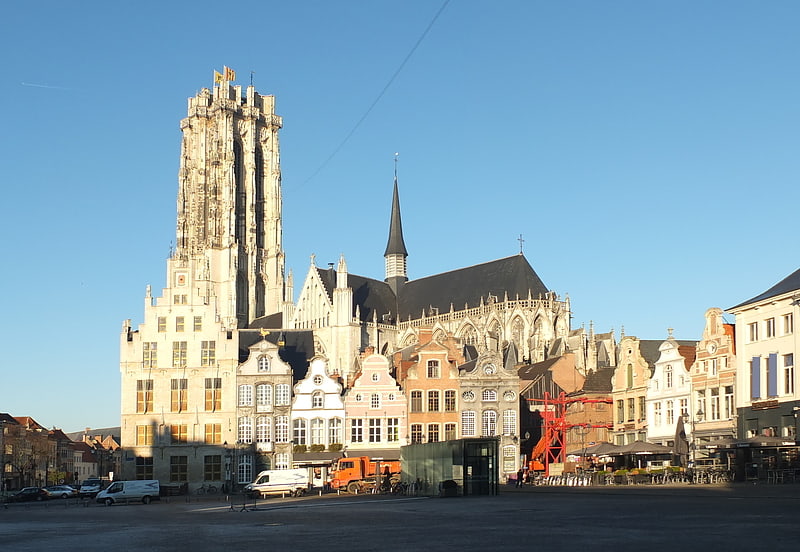
Also known as: Cathédrale Saint-Rombaut de Malines
Art-rich 13th-century religious edifice. St. Rumbold's Cathedral is the Belgian metropolitan archiepiscopal cathedral in Mechelen, dedicated to Saint Rumbold, Christian missionary and martyr who had founded an abbey nearby. His remains are rumoured to be buried inside the cathedral. State-of-the-art examination of the relics honoured as Saint Rumbold's and kept in a shrine in the retro-choir, showed a life span of about 40 years and a death date between 580 and 655, while tradition had claimed 775 AD.
In 1999, the tower of the cathedral was inscribed on the UNESCO World Heritage List as part of the Belfries of Belgium and France site, in recognition of its architecture and its importance in civic duties such as a watchtower.[16]
Address: Onder-den-Toren 12, 2800 Mechelen
Hortus Botanicus Lovaniensis, Leuven
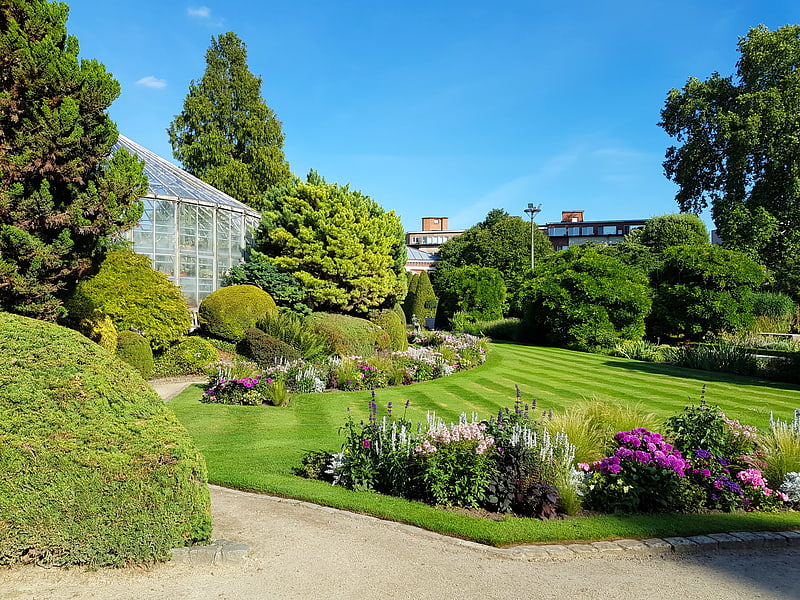
Also known as: Jardin botanique de Louvain
Botanical garden in Leuven, Belgium. The Hortus Botanicus Lovaniensis is a botanical garden in Leuven, Belgium, dating from 1738. It is situated in the city centre and has an extent of 2.2 hectares.[17]
Address: Kapucijnenvoer 30, 3000 Leuven
Sint-Donatus Park, Leuven
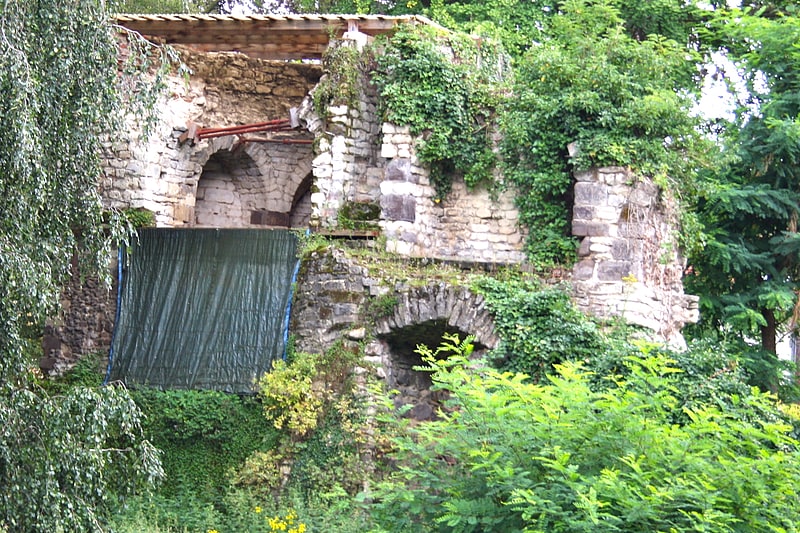
Park in Leuven, Belgium. The Sint-Donatus Park is an urban park with a village green in Leuven, Belgium.
The park is located between the Charles Deberiotstraat, the Vlamingenstraat and the Tiensestraat. The park was laid out in an English landscaping style and was redeveloped between 1993 and 1998.
In the Sint-Donatuspark there are several remains of the original inner city walls from the twelfth century. Among which are a few towers..[18]
Rogier, Saint-Josse-ten-Noode

The Place Charles Rogier or Karel Rogierplein, usually shortened to the Place Rogier, or Rogier by locals, is a major square in the Brussels municipality of Saint-Josse-ten-Noode, Belgium. It is named in honour of Charles Rogier, a former Prime Minister of Belgium who played a great political role during the Belgian Revolution of 1830.
The square is located on the transition between Brussels' historic city centre (the Pentagon) and the Northern Quarter business district (also called Little Manhattan), an exponent of modern Brussels. It is an important communication node in the city both in terms of road network and public transport. Many hotels, offices and shops adjoin it. The Rue Neuve/Nieuwstraat, Belgium's second busiest shopping street, also ends there. It is served by the metro and premetro (underground tram) station Rogier on lines 2, 3, 4 and 6.[19]
Liège Cathedral, Liège

Also known as: Cathédrale Saint-Paul de Liège
Gothic-style church with a cloister. Liège Cathedral, otherwise St. Paul's Cathedral, Liège, in Liège, Belgium, is part of the religious heritage of Liège. Founded in the 10th century, it was rebuilt from the 13th to the 15th century and restored in the mid-19th century. It became a Catholic cathedral in the 19th century due to the destruction of Saint Lambert's Cathedral in 1795. It is the seat of the Diocese of Liège.[20]
Address: Place de la Cathédrale 6, 4000 Liège (Liège)
Museum François Duesberg, Mons
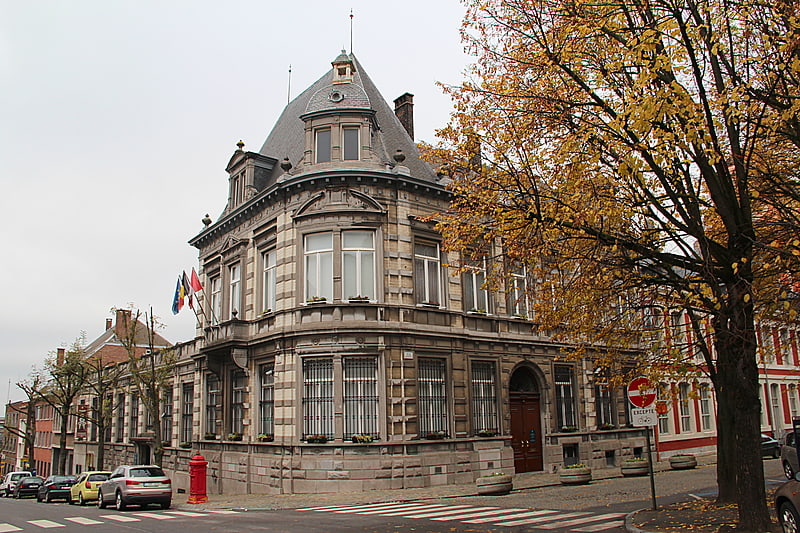
Also known as: Musée des arts décoratifs François Duesberg
Museum in Mons, Belgium. Museum François Duesberg was opened on 21 September 1994 and is devoted to decorative arts from the period 1775 to 1825. The museum is located in Mons opposite the collegiate Saint Waltrude Church in the former buildings of the National Bank of Belgium. It houses a large collection of objects in perfect condition: it has a prestigious collection of clocks and mantel clocks, exceptional gilded French bronzes, porcelain, pottery, jewelry, and numerous items of similar quality.
It was founded by François Duesberg and his wife Betty whose collections focus on the periods of Louis XVI, that of Charles X of France and of the First French Empire under Napoleon.[21]
Address: Square Franklin Delano Roosevelt 12, 7000 Mons
Belfry, Tournai
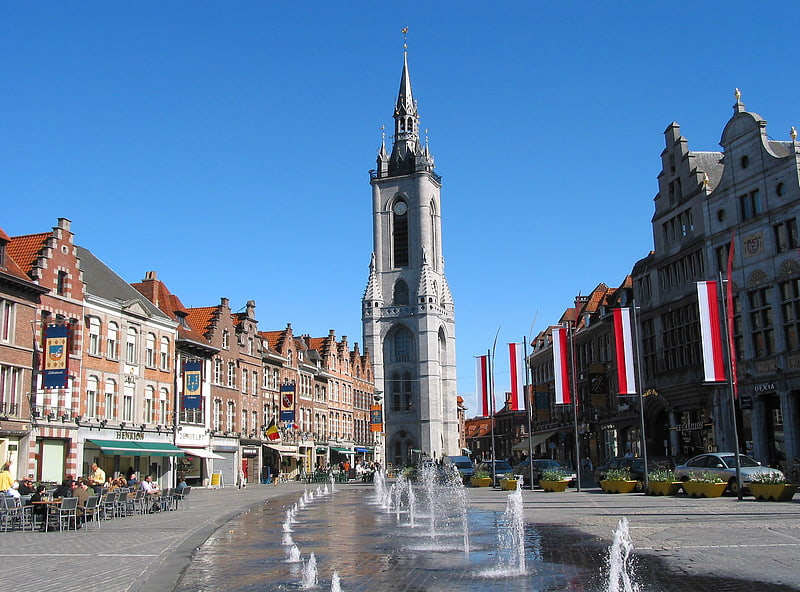
Also known as: Beffroi de Tournai
Tower in Tournai, Belgium. The belfry of Tournai, Belgium, is a freestanding bell tower of medieval origin, 72 metres in height with a 256-step stairway. This landmark building is one of a set of belfries of Belgium and France registered on the UNESCO World Heritage List in recognition of their civic architecture and importance in the rise of municipal power in Europe.
Construction of the belfry began around 1188 when King Philip Augustus of France granted Tournai its town charter, conferring among other privileges the right to mount a communal bell to ring out signals to the townsfolk.
The tower in its original form was evocative of the feudal keep, with a square cross section and crenelated parapet. It served in part as a watchtower for spotting fires and enemies. The growing city saw fit to expand the belfry in 1294, raising it by an additional stage, and buttressing its corners with four polygonal towerlets. A soldier statue was placed atop each towerlet, and a dragon icon surmounted the entire structure. The dragon, symbol of power and vigilance, also adorns other old tower tops in Belgium, including those of the Cloth Hall of Ypres and the belfry of Ghent.
A fire damaged the building in 1391. In the following years, the city obtained new bells to replace the ruined ones, and affixed gilded decorations to the newly restored top part of the tower: mermen, banners, and a new dragon. The largest bell of this period, called Bancloque, and the fire bell or Timbre, have been preserved to this day. A carillon was added in 1535.
In addition to its other roles, the belfry also served as a jail; some of its chambers housed prisoners until 1827.
The building underwent a major restoration in the mid-19th century. Another renovation campaign began in 1992, and lasted roughly a decade.[22]
Planckendael, Mechelen

Zoo in Mechelen, Belgium. Planckendael is a zoo, located on the grounds of Planckendael castle in the village district of Muizen, in Mechelen, Belgium. In 1956 the Royal Zoological Society of Antwerp bought the Planckendael estate in order to acquire a larger space for animals than what they owned: the city zoo in Antwerp. Planckendael hosts exotic animals like rhinos, bison and various antelope species.
Planckendael also has extensive leisure facilities: For children there is a large separate play area.[23]
Address: Leuvensesteenweg 582, 2812 Mechelen
Grand Curtius, Liège
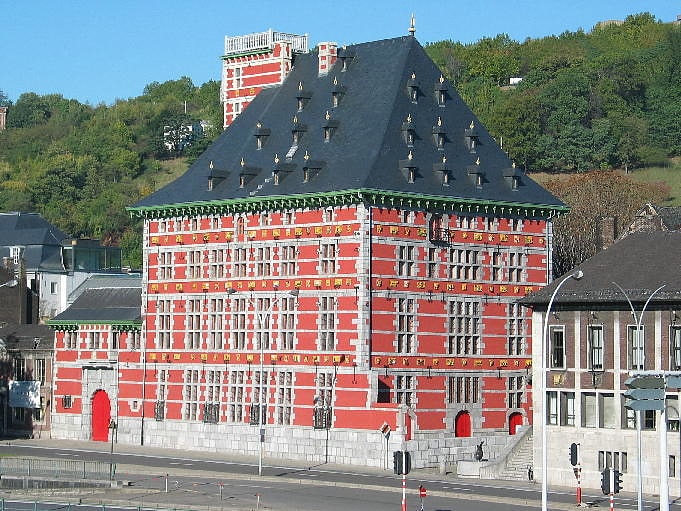
Archeology and decorative arts museum. The Curtius Museum is a museum of archaeology and decorative arts, located on the bank of the river Meuse in Liège, classified as a Major Heritage of Wallonia.
It was built sometime between 1597 and 1610 as a private mansion for Jean Curtius, industrialist and munitions supplier to the Spanish army. With its alternating layers of red brick and natural stone, and its cross-mullioned windows, the building typifies the regional style known as the Mosan (or Meuse) Renaissance.
After a 50 million euro redevelopment, the museum reopened as the Grand Curtius (Le Grand Curtius) in March 2009, now housing the merged collections of four former museums: the museum of archeology, the museum of weaponry, the museum of decorative arts, and the museum of religious art and Mosan art. Highlights in the collections include treasures of Mosan art such as a twelfth-century gilded reliquary triptych, formerly in the church of Sainte-Croix, the Evangelarium of Notger, sculptures by Jean Del Cour, and a portrait of Napoleon Bonaparte painted by Ingres in 1804: Bonaparte, First Consul.[24]
Address: Quai de Maestricht 13, 4000 Liège (Liège)
Belfry of Mons, Mons
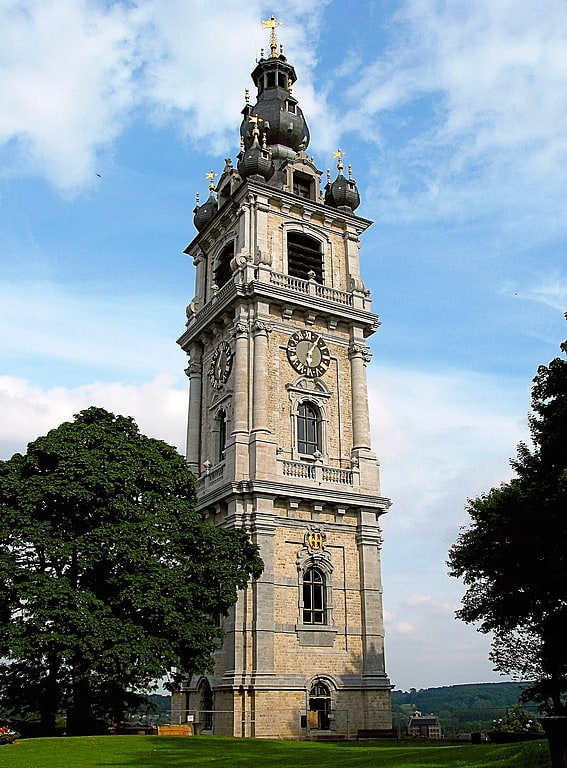
Also known as: Beffroi de Mons
Monument in Mons, Belgium. The belfry of Mons is one of the more recent among the belfries of Belgium and France. This belfry, classified in Belgium since 15 January 1936, belongs to the major cultural patrimony of Wallonia. It was inscribed on the UNESCO World Heritage List on 1 December 1999, for its unique architecture, civic importance, and testimony to the birth of municipal influence and power in the area. It is the only one in Belgium that is constructed in baroque style. At a height of 87 meters, it dominates the city of Mons, which is constructed on a hill itself.[25]
Address: Rampe du Chateau, 2, 7000 Mons